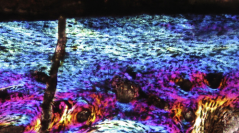

 Comptes Rendus Palevol
15 (1-2) - Pages 128-141
Comptes Rendus Palevol
15 (1-2) - Pages 128-141The histology of the turtle shell has proven to be a valuable source of characters for the study of development and shell origin, as well as early turtles’ lifestyles and systematics. Here we describe and discuss the shell bone microanatomy and histology of Condorchelys antiqua, a stem turtle from the Lower Jurassic of Patagonia. Examination of several elements (including costals, neurals, peripherals and plastral plates) reveals that the shell bones consist of a diploe structure in which the interior area of cancellous bone is framed by external and internal cortices. Whereas the external cortex is mostly composed of structural fiber bundles, histological composition of the internal cortex is more variable, exhibiting structural fiber bundles and/or parallel fibered bone. This histological variation in the internal cortex allows discerning between different types of plates. The cancellous bone is mostly well developed and consists of fine trabeculae composed of secondary lamellar bone tissue. Predominance of structural fiber bundles in the shell bones suggests that metaplasia plays an important role during the development of the shell in this taxon. Comparison with other stem Testudines (including Proganochelys quenstedti, Proterochersis robusta, Kayentachelys sp., Eileanchelys waldmani, and Heckerochelys romani) reveals that the shell histology of C. antiqua resembles more H. romani and E. waldmani than the other stem taxa. The obtained values of compactness of C. antiqua shell bones suggest an aquatic lifestyle for this taxon.
Stem Testudines, Microanatomy, Shell Histology, Lifestyle, Cañadón Asfalto Formation, Patagonia